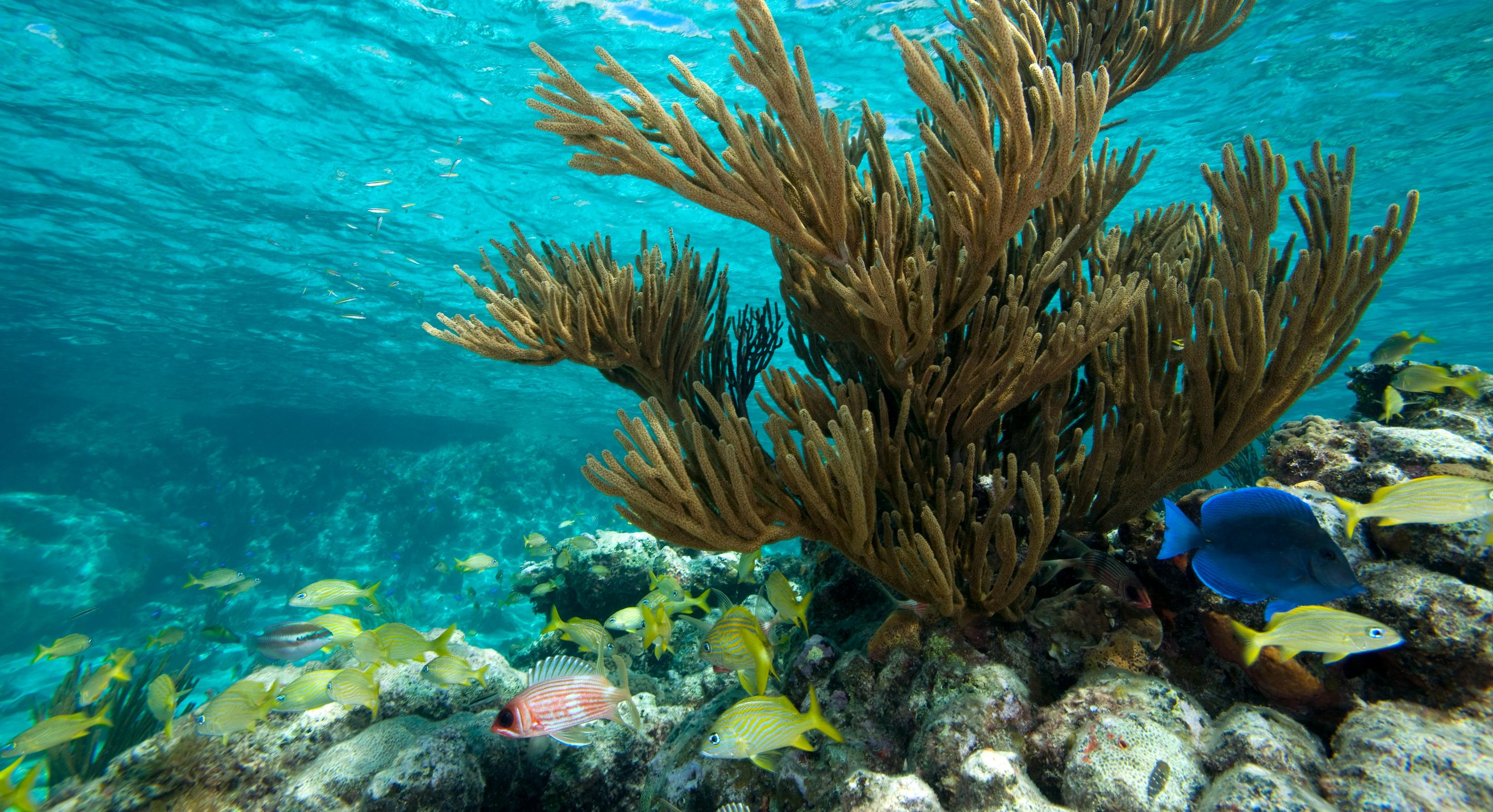Decades of overfishing have decimated one third of global fish stocks — upending the delicate balance of ocean ecosystems, and threatening the livelihoods and food supply of hundreds of millions of people who depend on them.
Marine protected areas aim to give struggling species a safe haven from overfishing and allow their populations to rebound.
But it’s not that simple. According to a new study from Conservation International and the Smithsonian Institution, the majority of protected reefs stretching nearly 1,000 kilometers (620 miles) from southern Mexico to Honduras are failing to boost adult fish populations. As a result, fisheries aren’t bouncing back in many places.
Researchers have rarely looked closely at the ages of reef fish in protected sites — and the findings are a wake-up call, said Steve Canty, Smithsonian scientist and study author.
“In the majority of the places we studied, the numbers of adult fish within populations were either stagnant or decreasing,” he said. “By breaking down the age groups, we’re able to clearly see there are much higher numbers of juvenile fish than adults, showing adult fish are not benefiting from the protections in place. This is hindering our efforts to rebuild fish populations.”
Adult fish are essential and age matters, Canty continued. That’s because older and larger adult females produce exponentially more — and better — eggs than smaller, younger females.
According to the findings, just five of the 111 marine protected areas studied saw a notable increase in the biomass of adult fish — that is, their weight and size — over a 12-year period, from 2006 and 2018. The majority saw no change and 28 sites experienced a decline in adult populations.
Several key patterns stood out among marine protected areas that lost adult populations — and those that gained them, said Conservation International fellow and study author Justin Nowakowski.
The marine protected areas that saw a decline in adult biomass were located near heavy coastal development and exposed to high levels of warming in their waters. Conversely, areas with an increase in population experienced fewer temperature spikes and less pressure from human development.
Critically, all sites that saw an increase in adult fish populations were adequately enforced and in areas with lower levels of warming and coastal development. The study found that adult fish struggled in sites that allowed commercial fishing (while banning certain methods or equipment), and where regulations were underenforced.
“What we're seeing is that many of these mixed-use protected areas that allow some fishing aren't as effective at replenishing fish stocks as we thought they would be,” Canty said. “Highly protected and fully protected work better — but enforcement is key.”
Enforcement can be expensive and many protected areas lack resources, he added. However, costs can be significantly reduced if communities are engaged and leading local management efforts.
Known as the Mesoamerican Reef, the coastal area where the study was conducted includes more than 500 fish species and spans lush mangrove forests and seagrass meadows. It is the second largest barrier reef system in the world, after Australia’s Great Barrier Reef.
“That diversity supports an enormous amount of people,” Canty said. “When we can work together and combine scientific and local knowledge, we can create a pattern of self-enforcement because communities know that they are the ultimate beneficiaries of heathy fish populations.”
On a global scale, understanding what makes marine protected areas effective — and what doesn’t — is urgent, Nowakowski said. Governments have their sights set on 2030, when countries have committed to protect 30 percent of the planet’s land and seas.
“There is now a rush to both create and account for marine protected areas and other conservation areas,” Nowakowski said. “We’re talking about more than tripling the current coverage of conservation areas in the next six years — it is critical that we get it right.”
And while the study’s findings are troubling, there are encouraging signs in the data: In most of the sites, fish populations at least remained stable during the dozen years they were studied, Canty said.
“How we help the juveniles reach adulthood is the critical piece we’re missing,” he added. “Once that happens, breeding stocks will increase, and we’ll start hitting the objectives we want.”
Further reading:
Mary Kate McCoy is a staff writer at Conservation International. Want to read more stories like this? Sign up for email updates. Also, please consider supporting our critical work.
